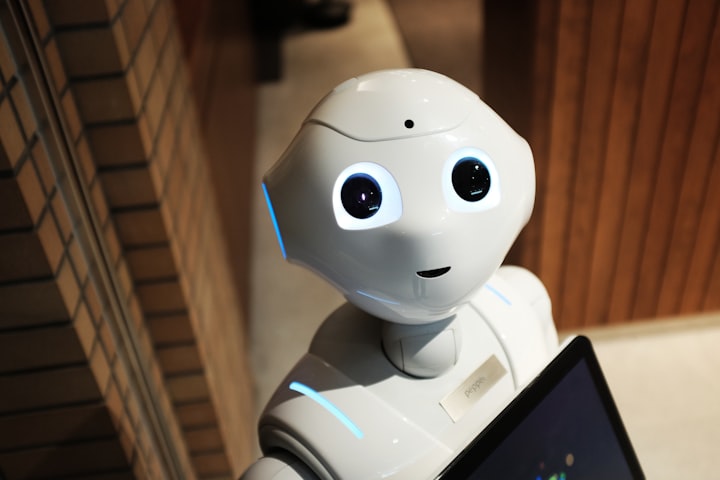Top 10 Future Technology Inventions
Future Inventions

The future is full of amazing possibilities and innovations that will change our lives and the world. Here are some of the most exciting future technology inventions that we can expect to see by 2050 or sooner.
1. Home automation
Imagine living in a smart home that can adjust the temperature, lighting, security, and entertainment according to your preferences and needs. Home automation is a technology that uses the Internet of Things, artificial intelligence, and voice control to make your home more comfortable, convenient, and efficient.
2. Self-driving cars
Self-driving cars are vehicles that can drive themselves without human intervention, using sensors, cameras, maps, and software to navigate the roads and traffic. Self-driving cars have the potential to reduce accidents, congestion, pollution, and energy consumption, as well as provide mobility and accessibility to people who cannot drive.
3. 3D printed medicine
3D printing is a technology that can create physical objects from digital models by depositing layers of material on top of each other. 3D printing can also be used to create personalized medicine, such as pills, implants, organs, and tissues, that are tailored to the patient's needs and specifications. 3D printed medicine could improve the effectiveness, safety, and availability of treatments for various diseases and conditions.
4. Necrobotics
Necrobotics is a technology that involves turning dead things into robots. For example, researchers at Rice University have turned a dead spider into a robot-like gripper that can pick up objects by injecting it with air. This works because spiders use hydraulics to move their limbs with fluid pressure. Necrobotics could have applications in science, medicine, and engineering.
5. Sand batteries
Sand batteries are a simple yet ingenious way of storing renewable energy using sand. Engineers in Finland have piled 100 tons of sand into a steel container and heated it up using wind and solar power. The heat can then be distributed to nearby buildings for warming purposes. Sand batteries can store energy for long periods of time and are cheap and environmentally friendly.
6. E-skin
E-skin is a technology that can mimic the sense of touch over long distances. E-skin is made of flexible and stretchable electronic materials that can detect pressure, temperature, and vibration. E-skin can be attached to clothing or devices and transmit tactile sensations wirelessly to another person or object. E-skin could enable new forms of communication, entertainment, education, and health care.
7. 3D printed eye tissue
3D printed eye tissue is a technology that can restore vision to people who have lost it due to diseases or injuries. Researchers at the National Eye Institute in the US have produced retinal tissue using stem cells and 3D bioprinting. The retinal tissue can respond to light and form connections with other cells in the eye. 3D printed eye tissue could pave the way for transplanting artificial eyes or repairing damaged ones.
8. Holograms
Holograms are images that appear to be three-dimensional and floating in mid-air. Holograms are created by using lasers or LEDs to project light onto a surface or a medium that can reflect or refract it. Holograms can be used for entertainment, education, advertising, art, and communication.
9. Lab-grown food
Lab-grown food is food that is produced without using animals or plants, but rather by using cells, microbes, or molecules. Lab-grown food can include meat, dairy, eggs, seafood, fruits, vegetables, and more. Lab-grown food could offer benefits such as reducing animal suffering, environmental impact, food waste, and health risks.
10. Brain-reading robots
Brain-reading robots are robots that can read your mind and act accordingly. Brain-reading robots use brain-computer interfaces (BCIs) to measure your brain activity and decode your thoughts, intentions, emotions, and commands. Brain-reading robots could assist you in various tasks such as learning, working, playing, or caring for you.
Conclusion
The future is not only bright but also full of surprises and wonders. These are just some of the future technology inventions that could transform our lives and the world in the next decades. However, there are many more inventions that are yet to be discovered or invented by creative and curious minds. The future is what we make it!
FAQs
Q: What are some of the benefits of future technology inventions?
A: Some of the benefits of future technology inventions are:
- Improving our health, well-being, and quality of life
- Enhancing our communication, education, and entertainment
- Solving our social, environmental, and economic challenges
- Expanding our knowledge, creativity, and innovation
Q: What are some of the challenges or risks of future technology inventions?
A: Some of the challenges or risks of future technology inventions are:
- Ensuring their safety, security, and ethical use
- Managing their impact on society, culture, and human rights
- Balancing their costs, benefits, and accessibility
- Adapting to their changes and disruptions
About the Creator
Shahid Muhammad
Shahid Muhammad: Content writer, blogger, freelancer. Engaging storyteller. Tailored content. Adaptable style. Constant learner. Inspiring through words.






Comments
There are no comments for this story
Be the first to respond and start the conversation.